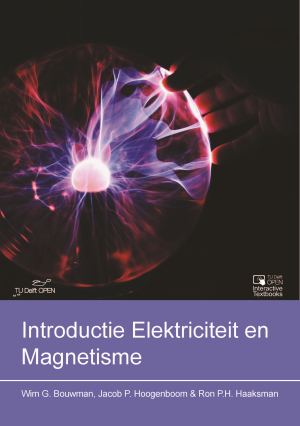Introductie Elektriciteit en Magnetisme
Keywords:
Elektriciteit, magnetisme, schakelingen, velden, wetten van MaxwellSynopsis
Het boek is een algemene introductie in het elektromagnetisme, zoals in de meeste Amerikaanse universiteiten in het eerste jaar wordt gegeven. Uiteindelijk worden de wetten van Maxwell in integraal-vorm gegeven. De begrippen elektrische lading, krachten en velden worden beschreven. Hieruit wordt het begrip potentiaal gedefinieerd, met als toepassing de condensator. Vervolgens wordt er een link gelegd tussen het macroscopische en microscopische beeld van elektrische stroom. De relatie tussen stroom en magnetisch veld wordt gelegd en geïllustreerd aan de hand van spoelen. Het gedrag van condensatoren en spoelen in wisselstroomschakelingen wordt afgeleid. Tot slot laten we zien dat elektromagnetische golven voldoen aan de wetten van Maxwell.
De studenten leren de wetten van Maxwell toe te passen in eenvoudige problemen. Ze leren grootheden uit te rekenen en eenvoudige afleidingen te maken. Ze passen symmetrie toe om een probleem wiskundig sterk te vereenvoudigen.
The book is a general introduction to electromagnetism, as given in the first year in most US universities. Eventually, Maxwell's laws are presented in integral form. The concepts of electric charge, forces, and fields are described. From this, the concept of potential is defined, with the capacitor as an application. A link is then made between the macroscopic and microscopic pictures of electric current. The current and magnetic field relationship is established and illustrated based on coils. The behaviour of capacitors and coils in alternating current circuits is deduced. Finally, we show that electromagnetic waves obey Maxwell's laws.
Students learn to apply Maxwell's laws in simple problems. They learn to calculate quantities and make simple derivations. They apply symmetry to simplify a problem mathematically.
Downloads





